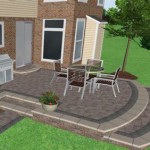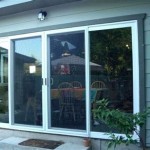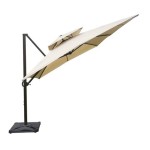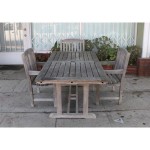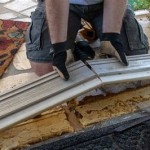How To Fix Broken Wicker Patio Furniture
Wicker patio furniture, prized for its natural aesthetic and lightweight durability, is susceptible to damage from prolonged exposure to the elements and general wear. Identifying and addressing these damages promptly can significantly extend the lifespan of wicker pieces, preserving their appearance and functionality. This article provides a comprehensive guide to repairing common types of damage to wicker patio furniture, enabling individuals to maintain their outdoor seating arrangements effectively.
Before commencing any repair work, a thorough assessment of the damage is crucial. This involves identifying the type of wicker material (natural or synthetic), the location and severity of the damage, and the necessary tools and materials required for the repair. Proper identification ensures that appropriate techniques and materials are employed, preventing further damage and ensuring a lasting repair. Neglecting this preliminary step could lead to the selection of unsuitable repair methods, potentially exacerbating the original issue.
Identifying the Type of Wicker and Damage
The first step in repairing wicker furniture is determining whether it is made of natural or synthetic wicker. Natural wicker is derived from plant materials such as rattan, reed, or bamboo. It offers a classic appearance but is more susceptible to damage from moisture and UV exposure. Synthetic wicker, typically made from resin or plastic, is more durable and weather-resistant, but it can still suffer from splitting, cracking, or unraveling. Distinguishing between the two is essential, as different repair techniques and materials are required for each type.
Once the type of wicker is identified, the specific type of damage needs to be assessed. Common types of damage include:
- Broken Strands: This involves individual strands of wicker that have snapped or been torn. This is common in areas that bear weight or are frequently exposed to stress.
- Unraveling: This occurs when the interwoven pattern of the wicker starts to come loose, particularly at the edges or corners of the furniture.
- Splitting: Over time, wicker can become dry and brittle, leading to splitting along the grain. This is more prevalent in natural wicker exposed to sun and fluctuating humidity.
- Sagging Seats or Backs: Prolonged use can cause the wicker seating or back supports to sag, reducing comfort and structural integrity.
- Frame Damage: The underlying frame, typically made of wood or metal, can also be damaged due to rust, rot, or physical impact. Frame damage can indirectly contribute to the deterioration of the wicker itself.
Identifying the specific type of damage helps determine the appropriate repair strategy and ensures the use of relevant tools and materials. Accurate assessment minimizes unnecessary work and optimizes the effectiveness of the repair.
Tools that are commonly required to address the damage includes: sandpaper, utility knife, replacement wicker strand, glue, pliers and paint.
Repairing Broken Wicker Strands
Repairing broken wicker strands is a common task in wicker furniture maintenance. The process depends on the severity of the break and the type of wicker material. For minor breaks in natural wicker, applying wood glue to the broken ends and clamping them together until dry may suffice. For more significant breaks or in cases where the original strand is missing, a replacement strand is required. Matching the replacement strand to the existing wicker in terms of color, size, and material is crucial for a seamless repair. Replacement strands can often be sourced from furniture supply stores or by salvaging undamaged sections from less visible areas of the furniture.
The procedure for replacing a broken strand involves:
- Cleaning the Area: Remove any loose debris or frayed edges from the broken area using a utility knife or sandpaper. This creates a clean surface for the adhesive to bond.
- Preparing the Replacement Strand: Cut the replacement strand to the appropriate length, ensuring that it is slightly longer than the gap being filled to allow for overlap.
- Applying Adhesive: Apply a small amount of flexible adhesive, such as epoxy or construction adhesive, to the ends of the replacement strand and the corresponding areas on the existing wicker. For natural wicker, wood glue can also be used.
- Inserting the Replacement Strand: Carefully weave the replacement strand into the existing wicker pattern, following the original weaving pattern as closely as possible. Secure the ends of the strand with clamps or tape until the adhesive is fully cured.
- Finishing: Once the adhesive is dry, trim any excess material from the replacement strand with a utility knife. If necessary, apply a matching stain or paint to blend the repair with the surrounding wicker.
When working with synthetic wicker, the process is similar, but the type of adhesive used may differ. A plastic adhesive or a heat gun to melt the plastic and fuse them together may be appropriate. Ensuring proper ventilation is important when working with adhesives and heat guns.
For additional support, small nails or staples can be used to secure the replacement strand, especially in areas that bear significant weight. However, care should be taken to avoid splitting the wicker or damaging the surrounding area. The use of a pilot hole can prevent splitting when using nails or screws.
Addressing Unraveling and Sagging
Unraveling and sagging are common problems in older wicker furniture. Unraveling occurs when the interwoven pattern of the wicker starts to come loose, usually at the edges or corners. Sagging is a result of the wicker stretching or losing its tension over time, particularly in seats and backrests. Addressing these issues promptly can prevent further damage and restore the furniture's structural integrity and aesthetic appeal.
To address unraveling:
- Identify the Loose Ends: Locate the loose ends of the unraveling wicker strands. These are typically found at the edges or corners of the furniture.
- Re-weave the Strands: Carefully re-weave the loose strands back into the original pattern. Use pliers or a small tool to manipulate the strands if necessary.
- Secure the Ends: Once the strands are re-woven, secure them in place with adhesive or small staples. Ensure that the adhesive is compatible with the type of wicker being repaired.
- Reinforce the Area: For areas prone to unraveling, consider adding additional support by wrapping the edges with strong twine or reinforcing them with small metal brackets.
To address sagging:
- Assess the Damage: Determine the extent of the sagging. Minor sagging can sometimes be corrected by tightening the existing wicker strands. More severe sagging may require replacing or reinforcing the underlying support structure.
- Tighten the Strands: If the sagging is minor, try tightening the existing wicker strands by gently pulling them taut and securing them with adhesive or staples.
- Reinforce the Support Structure: For more severe sagging, reinforce the underlying support structure by adding additional slats or braces made of wood or metal. These supports should be securely attached to the frame of the furniture.
- Replace Damaged Wicker: In some cases, the sagging may be caused by damaged or stretched wicker. In these situations, it may be necessary to replace the damaged wicker with new material. Follow the steps outlined for repairing broken wicker strands to replace the damaged sections.
In the long term, minimizing prolonged exposure to excessive weight and direct sunlight can help prevent sagging and unraveling. Regularly cleaning the wicker and applying a protective sealant can also help maintain its integrity.
Repairing Frame Damage
The frame of wicker patio furniture, commonly constructed from wood or metal, provides structural support. Damage to the frame, such as rot, rust, or breakage, can compromise the entire piece of furniture. Addressing frame damage promptly is crucial for maintaining the furniture's stability and preventing further deterioration.
For wooden frames:
- Assess the Damage: Determine the extent of the rot or breakage. Minor rot can often be treated with a wood preservative, while more extensive damage may require replacing the affected sections.
- Remove Rotted Wood: Carefully remove any rotted wood using a chisel or scraper. Ensure that all traces of the rot are removed to prevent it from spreading.
- Treat the Area: Apply a wood preservative to the affected area to kill any remaining rot spores and protect the wood from future damage.
- Replace Damaged Sections: If the damage is extensive, replace the affected sections with new wood. Cut the new wood to the appropriate size and shape, and secure it to the existing frame with screws or nails.
- Reinforce the Frame: Consider adding additional supports or braces to reinforce the frame and prevent future damage.
For metal frames:
- Remove Rust: Remove any rust from the metal frame using a wire brush or sandpaper. For stubborn rust, a rust remover may be necessary.
- Treat the Area: Apply a rust-inhibiting primer to the cleaned metal to prevent future rust formation.
- Repair Breaks: If the metal frame is broken, it may be necessary to weld the broken sections back together. This requires specialized equipment and skill. Alternatively, metal brackets or plates can be used to reinforce the broken area.
- Replace Damaged Sections: If the damage is too extensive to repair, replace the affected sections with new metal. Cut the new metal to the appropriate size and shape, and secure it to the existing frame with bolts or welds.
After repairing the frame, protect it with a weather-resistant coating. For wooden frames, apply a sealant or paint. For metal frames, apply a rust-resistant paint or powder coating. Regularly inspecting and maintaining the frame can help prevent future damage and prolong the lifespan of the furniture.
The process of repairing wicker patio furniture requires a certain level of patience and attention to detail. By following these steps and utilizing the correct tools and materials, individuals can effectively restore their wicker furniture, preserve its value, and enjoy its aesthetic appeal for years to come.

How To Repair Rattan Wicker Furniture Tools And Tutorial Rattanyard

Resin Wicker Patio Furniture Unraveling Hometalk

Resin Wicker Patio Furniture Unraveling Hometalk

5 Easy Steps To Replace The Wicker Strands Damaged Youtube

How To Fix The Peel Off Broken Weaving Of Chair Youtube

Wicker Furniture Repair Guide Jessica Welling Interiors

How To Fix Broken Wicker In The Leg Youtube

How To Fix Wicker Patio Furniture

How To Fix Wicker Patio Furniture

Wicker Furniture Repair Guide Jessica Welling Interiors
See Also

